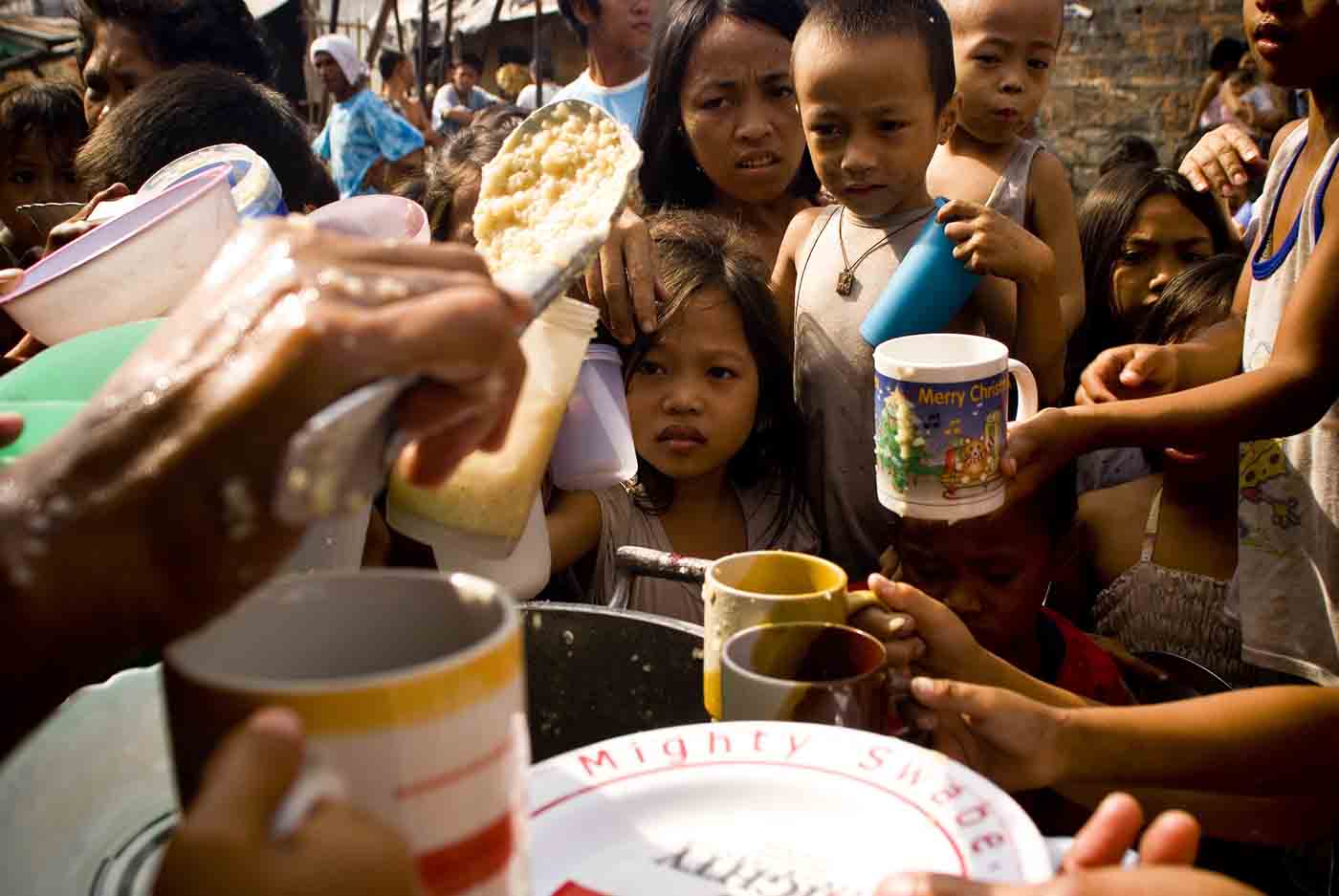"This is a big help,” says 35-year-old Leonardo Zafra, a security guard at a small inn in Manila, after a customer hands him a 20 peso (50 US cent) tip. The 260 pesos he receives for 12 hours of work each day is hardly enough to support his family of six in Rizal, a nearby province. He spends 60 pesos a day commuting, and spends the rest on school expenses, utilities and food.
With the continued increase in food prices, however, he tells IRIN it is getting harder and harder to make ends meet. The 21 peso-per-kilo rice they used to buy - good for one meal for six - now costs 29 pesos. The `pandesal’ (roll) they used to buy for 1 peso per piece - their usual breakfast fare - now sells for 2.50 pesos each.
Data from the Bureau of Agricultural Statistics show that rice prices have jumped by over 20 percent in the first quarter of 2008 - from 23.31 pesos per kilo of regular milled rice in January to 29.70 pesos in April. Fancy rice saw almost a 50 percent increase - from 31.43 pesos per kilo to 45.
“We don’t buy meat any more,” Zafra said. “Sometimes, we just cook instant noodles to extend the rice and give it flavour.”
In other places, it is even worse. In the Visayas region, local newspapers report that farmers now subsist on root crops and are selling their livestock to put food on the table. Philippine President Gloria Macapagal-Arroyo recently advised Filipinos to mix rice with sweet potatoes and eat cheaper cereals to avoid going hungry. The head of the Catholic Bishops Conference of the Philippines has suggested that Filipinos should make corn and sweet potatoes staples.
Productivity crisis
Many non-governmental organisations believe Filipinos should not be suffering this much. “The reality is that the crisis is characterised mainly by low local productivity,” Rosario Bella Guzman, executive editor of IBON Foundation, a local think tank, told IRIN.
“The fact that we have now become a rice importer is already a crisis.” The Philippines, home to the International Rice Research Institute (IRRI), is largely an agricultural country and used to be a rice exporter. However, low investment in agriculture has turned the country into one the largest importers of rice in the world, said Guzman, with the government scrambling to secure rice imports from Vietnam and Thailand when prices began to spike early this year.
“Agricultural productivity has only grown at a rate of 1 percent per annum over the past seven years. We produce 3 metric tonnes (mt) per hectare, but IRRI says to provide food security for Filipinos, we need to produce 5.4 mt per hectare,” Guzman explained.
 Photo: Veejay Vilafranca/IRIN  |
| A Filipino boy winnowing the rice crop - a much-valued commodity. High prices and rice shortages have meant belt-tightening for poor Filipinos |
The government is trying to address the problem of shortages by distributing subsidised rice, but not everyone is benefiting. The National Food Authority has been selling rice for 18.25 pesos per kilo, but each person is only allowed a kilo or two each, depending on the area.
In Farmer’s Market in Quezon City, one of the major markets in Manila, vendors tell IRIN that 50 sacks of subsidised rice - each containing 50 kilos - are sold out in as little as two hours. Once it runs out, people either fork out for the more expensive varieties, or suffer hunger for the day.
To ensure that only the poorest of the poor benefit from the subsidies, the government has announced that it will issue rice access cards to 600,000 families in Metro Manila. Only households with five members or more, and earning 4,920 pesos or less, qualify to receive access cards.
The access cards, however, exclude about two-thirds of the households living below the poverty line in Metro Manila, including Zafra, who earns 7,800 pesos a month, and his family. According to the National Statistical Coordination Board, a family with five members needs at least 8,569 pesos monthly in order not to be classified as poor.
Cash transfers
In the provinces, a 5 billion peso programme called Ahon Pamilyang Pinoy (Rise Filipino Family) will provide the poorest families in the 20 poorest provinces with conditional cash transfers for five years. Under the programme, a poor family will be given 500 pesos a month for health care, plus 300 pesos a month for every child who goes to school. But the government says only 300,000 - seven percent of the total number of poor families in the country - will benefit from it.
The proper solution, IBON’s Guzman says, is to invest in agriculture and boost local productivity. “Policy changes will bring down prices,” she says.
jd/bj/cb
This article was produced by IRIN News while it was part of the United Nations Office for the Coordination of Humanitarian Affairs. Please send queries on copyright or liability to the UN. For more information: https://shop.un.org/rights-permissions





